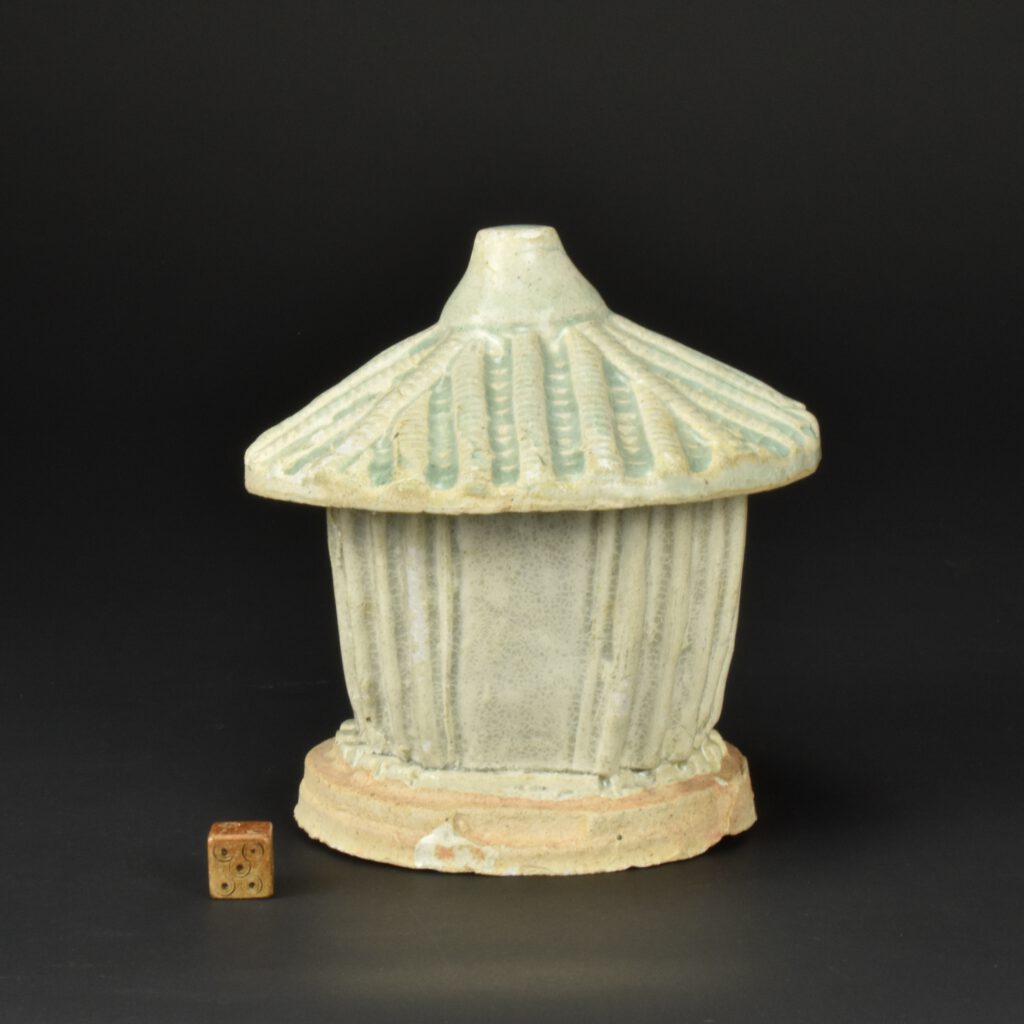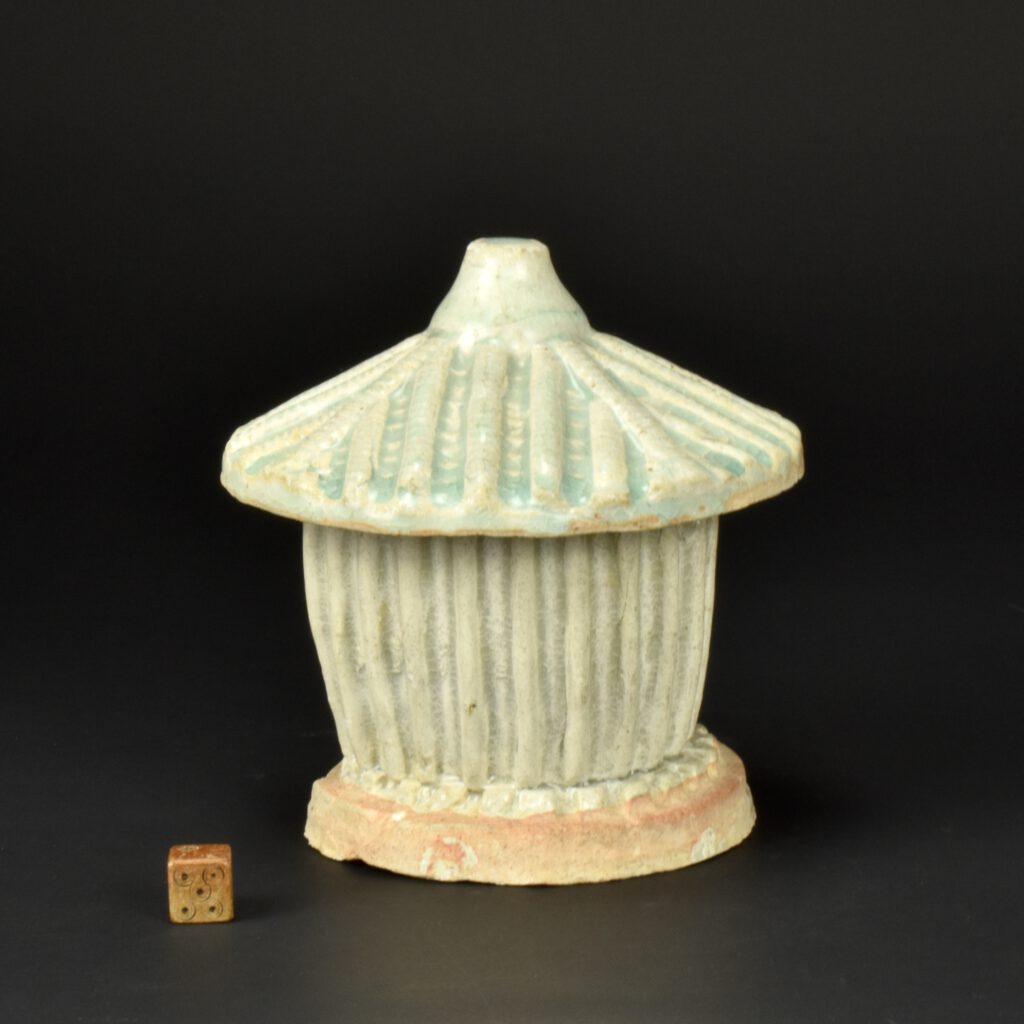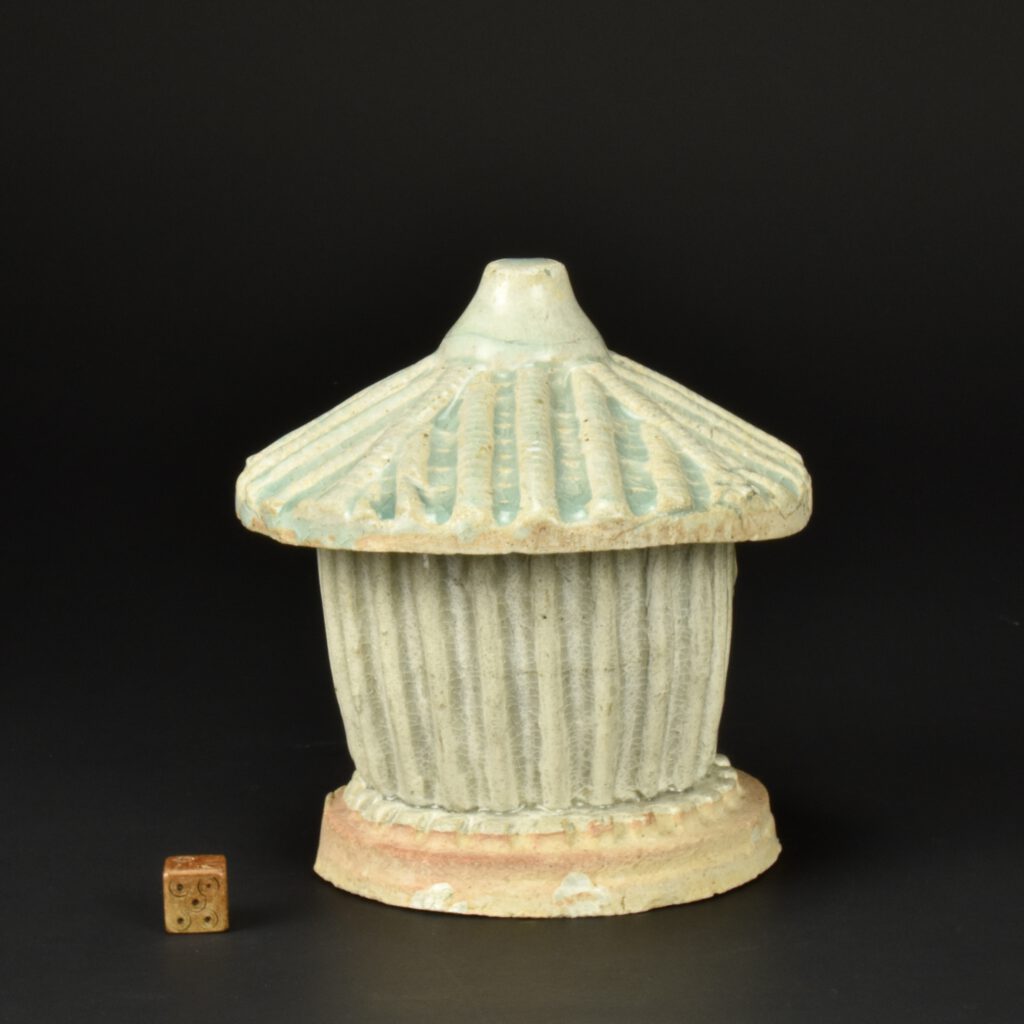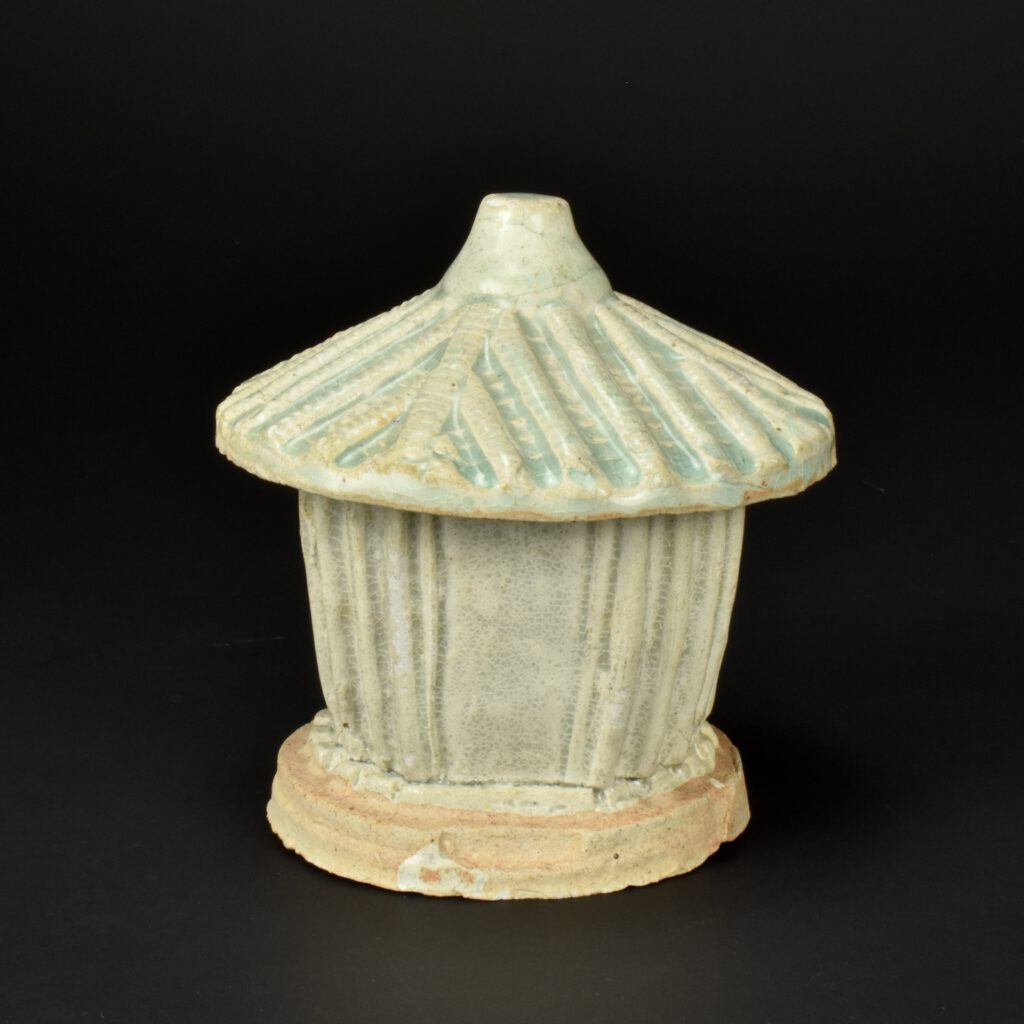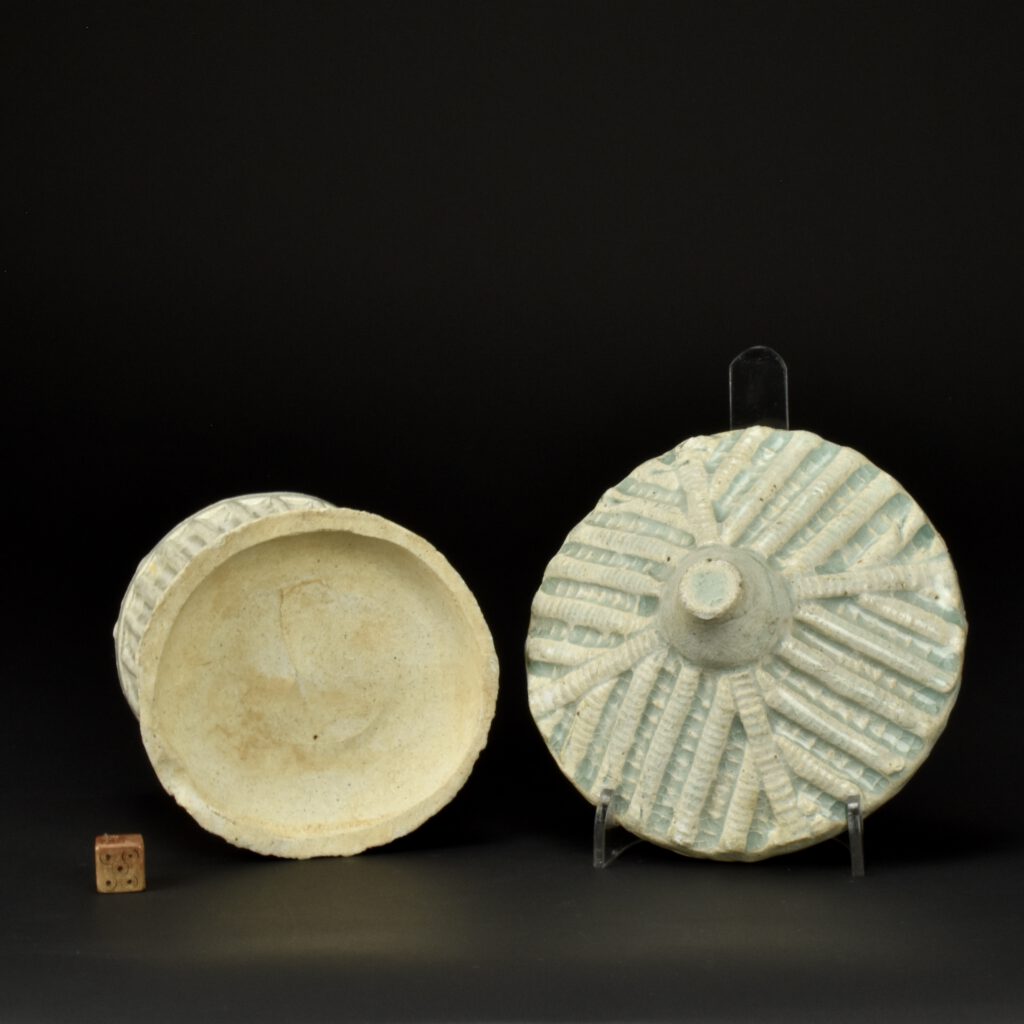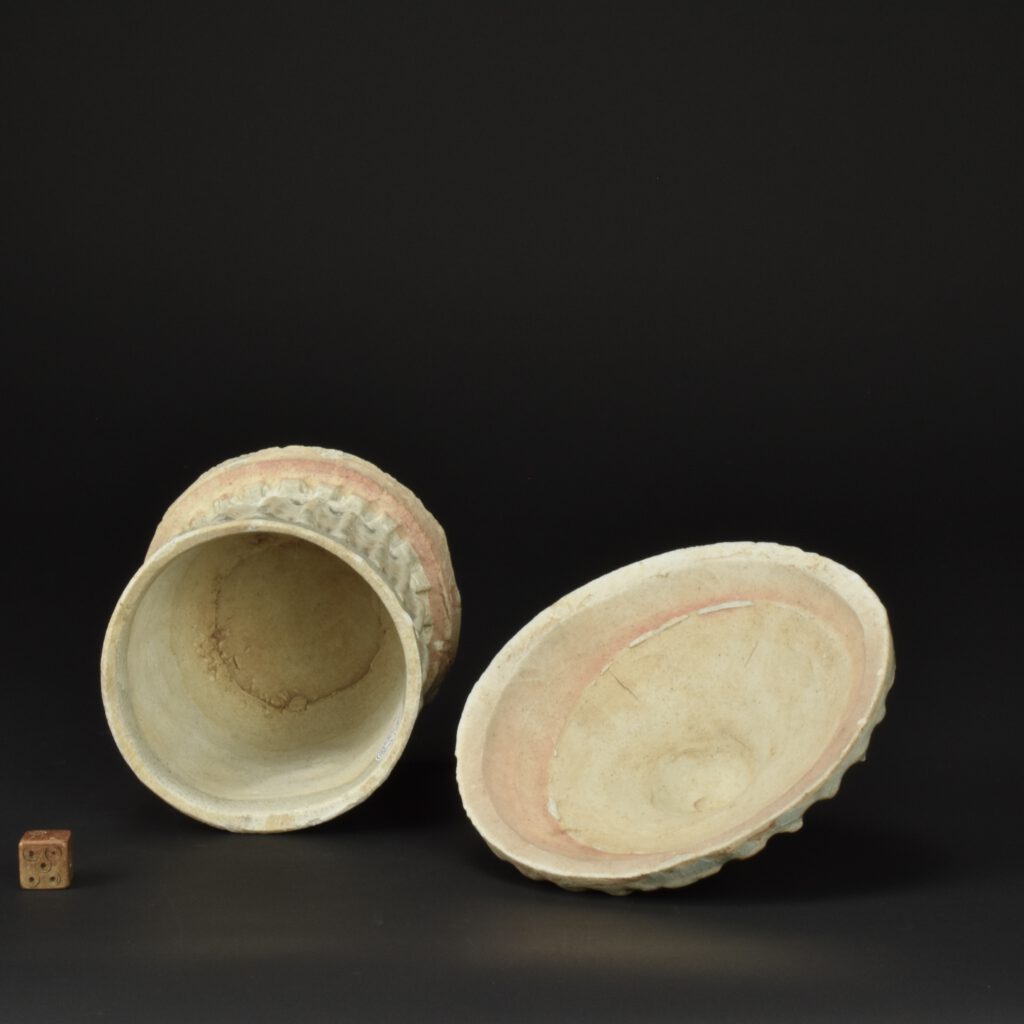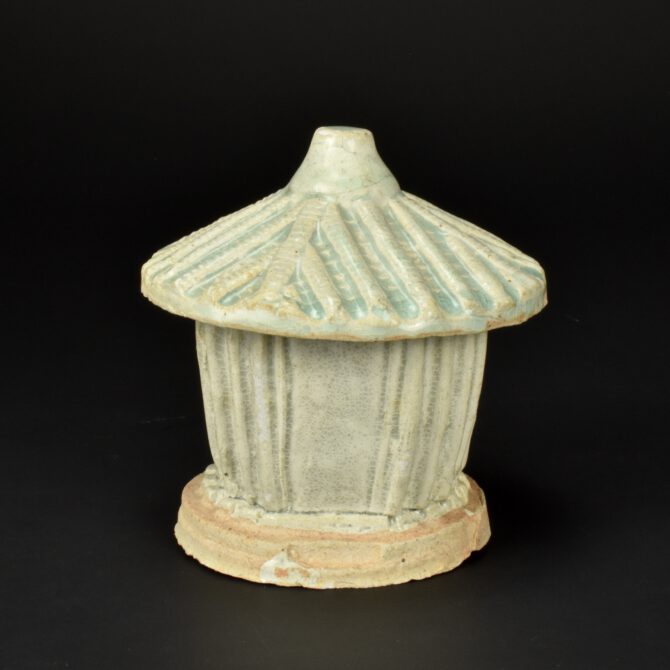
A Southern Song Qingbai Model of a Granary 13th Century
A Southern Song or Early Yuan Qingbai Porcelain Model of a Granary with Detachable Roof, 13th century, Perhaps from a Kiln in Fujian. The interior of the cover shows where it was placed on the base while firing, the impression exactly fits the base. A similar Southern Song Qingbai granary datable to 1251 recovered from Chongren county see : Dated Qingbai Wares of the Song and Yuan Dynasties (Ching Leng Foundation,1998) page 79, plate 89. Granaries were important to early settled communities throughout the world, they marked a social change between those who lived hand-to-mouth and those who had enough to sustain themselves over different seasons or even years. Having more than you needed for that moment also gave way to the possibility of trade. They were a symbol of stability, wealth and therefore power, so it is perhaps unsurprising that granaries were an important part of Chinese Mingqi ceramics, ceramics models made to be buried with the dead for use in the next world.
See Below For More Photographs and Information.
SOLD
- Condition
- In very good condition, the glaze is crazed, minute chips under the rim of the cover. Minor wear to the edges of the cover.
- Size
- Height 12.3 cm (4 3/4 inches)
- Provenance
- N/A
- Stock number
- 26547
- References
- For a similar Song or Yuan granary see : The Falk Collection II, Chinese and Japanese Works of Art, Christie`s New York, Lot 458 ; Described as " A Rare Qingbai Small Model of a Granary, Song Dynasty, 13th Century". For a similar Southern Song Qingbai granary datable to 1251 recovered from Chongren county see : Dated Qingbai Wares of the Song and Yuan Dynasties (Ching Leng Foundation,1998) page 79, plate 89. For two Song Qingbai granary and cover of this type, one from the Ashmolean Museum referred to as a storehouse and one from the Royal Ontario Museum described as a granary is illustrated in : Qingbai Ware, Chinese Porcelain of the Song and Yuan Dynasties (Edited by Stacey Pierson, Percival David Foundation. 2002. ISBN 0-7286-0339-X) the Ashmolean Museum example ; page 228, plate 128, for the Royal Ontario Museum example see page 230, plate 129.
Information
A Related Qingbai Porcelain Granary
Robert McPherson Antiques - Sold Archive Number 21661
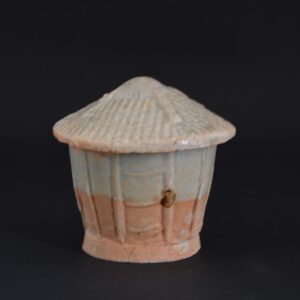
Mingqi Granaries :
Farming started some 11 thousand years ago. Granaries were important to early settled communities throughout the world, they marked a social change between those who lived hand-to-mouth and those who had enough to sustain themselves over different seasons or even years. Having more than you needed for that moment also gave way to the possibility of trade. They were a symbol of stability, wealth and therefore power, so it is perhaps unsurprising that granaries were an important part of Chinese Mingqi ceramics, ceramics models made to be buried with the dead for use in the next world.
Qingbai Ware :
The earliest known qingbai wares were produced in Jingdezhen in Jiangxi province around the late 10th century and are characterized by faint pale-blue glazes on low, wide forms. Qingbai continued to be enormously popular and highly produced throughout the Song dynasty (960-1279) and was prevalent in the Yuan dynasty (1279-1368), but slackened during the Ming dynasty (1368-1644) until being replaced by tianbai, ‘sweet white’ ware. The initial forms of qingbai were simple bowls and dishes, but by the mid-Northern Song the forms had advanced to include a wide variety of objects used for daily life such as ewers, boxes, incense burners, granary models, vases, jars, sculptures, cups, cupstands, water droppers, lamps, grave wares, and tools for writing and painting. The precedent for the majority of these forms is found in earlier metalwork and lacquer and Rawson has suggested that the imitation of silver was the primary force behind the production of white wares, including qingbai. See our `History` section for more information about Song Porcelain and Stoneware by Mindy M. McDonald.
